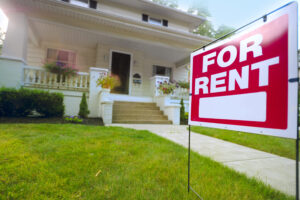 Costs for America’s renters remain relatively high—with the median rent asking price in August ($2,052) coming in just $2 below the record high set last year—and ticking up month over month. At least on paper.
Costs for America’s renters remain relatively high—with the median rent asking price in August ($2,052) coming in just $2 below the record high set last year—and ticking up month over month. At least on paper.
But experts have noted some indication that property owners in certain cases are discounting costs in the form of concessions, such as move-in deals, which is something they have not often seen in the past couple of years.
Redfin reports that some landlords are “doling out one-time discounts” to attract tenants, while maintaining high asking prices on lease agreements.
That means rents are effectively coming down in some areas even though the declines don’t show up in asking-rent data.

“A year ago, you really didn't see concessions in the market,” Rent.com’s CEO Jon Ziglar told Redfin’s reporters. “Fast-forward to today, and they are far more common, with landlords offering from one to three months free in an effort to attract new tenants without lowering their asking rents.
Ziglar said higher-end properties are starting to see pressure in certain markets because a significant portion of new units are in the luxury segment.
“We are still seeing a lot of competition for more affordable units due to less new supply, as well as increased pressure on consumer wallets limiting the ability to stretch for that higher level experience,” Ziglar added.
Analysts also have noticed some building owners raising rents for existing tenants but not new tenants. This is one way “to bolster returns without scaring off prospective renters,” noted Redfin’s authors.
Though property owners are still commanding near record-high rents, data shows no large year-over-year jumps as seen in the past two years, when rental demand was surging. For example, notes Redfin, in August last year the median asking rent was up 12.3% year over year.
Redfin’s analysts surmise that rent growth has cooled over the past year due to “slowing household formation, economic uncertainty, affordability challenges and an increase in rental supply.”
New residential projects—up 28.9% in the second quarter of this year, the most recent with available data—mean landlords have more vacancies to fill.
The national rental vacancy rate was 6.3% in the second quarter, up from 5.6% a year earlier, according to Redfin. That’s close to the first quarter’s 6.4% rate, which was the highest in two years.
Rents are decreasing in the West (down 1.1% in August), rising in the Midwest (by 4.6%) and Northeast (up by 1.2%), according to Redfin’s data.
Experts attribute the cooling rents in the West and South in part to outsized rent increases during the pandemic.

 theMReport.com Your trusted source for mortgage banking news
theMReport.com Your trusted source for mortgage banking news









